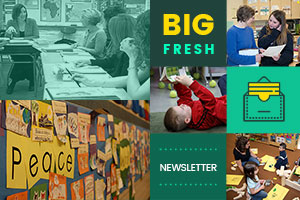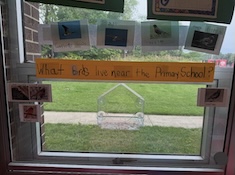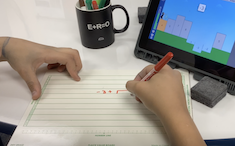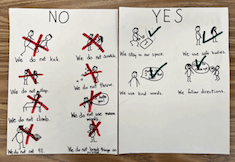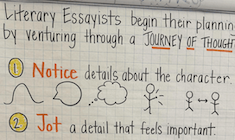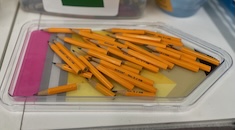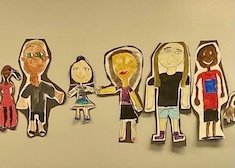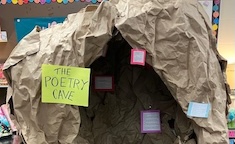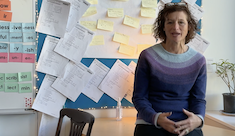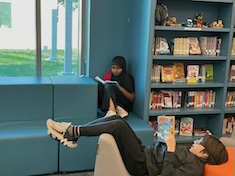Library
Choice Literacy Articles & Videos
The Choice Literacy library contains over 3,000 articles and 900 videos from 150+ contributors. Classic Classroom and Literacy Leadership subscribers have access to the entire library. Content is updated continuously, with five to six new features published each week.
Latest Content
December 12, 2025: Let Choice Shine
This week’s newsletter is about practical ways to offer students choice.
December 5, 2025: Be Yourself (It’s Enough)
This week’s newsletter is about the importance of showing up fully as yourself and finding joy in uplifting readers and writers.
November 28, 2025: Hunt for the Celebration
This week’s newsletter is a note from Ruth.
November 21, 2025: Food and Community
This week’s newsletter is about food and community.
November 14, 2025: Protecting Inquiry
This week’s newsletter is about protecting inquiry.
Just Ask Them: Including Students in the Feedback Process
Hypothesizing what our students might be thinking eats into our time to act upon what they’re actually thinking. Heather Fisher suggests, “Let’s just ask the students.” Heather outlines a process for gathering responses from students of all ages and compiling the data to make it useful in determining next steps.
Protecting Choice and Inquiry with Outdoor Learning Walks
As curriculum shifts in our buildings to feeling more structured, Kate Mills and Tara Barnett reflect on how to protect student choice and opportunities for inquiry. They share a simple and practical way to create opportunity for both choice and inquiry through outdoor learning.
November 7, 2025: Tools to Foster Independence
This week’s newsletter is about fostering independence with tools.
Leveling Up The Locker Problem
Finding a task as rich as The Locker Problem is a bit like finding the perfect read aloud. Jodie Bailey guides us to recognize different ways to turn a seemingly mundane problem into a rich task.
Those Pictures You Make: Personalized Tools to Help Students
Becca Burk shares how to personalize tools for students to build independence in their academics and emotional regulation.
Fostering Independence with Tools
Melissa Quimby tackles the question of how to foster more independence in her students. She considers the way tools can help scaffold independence. Melissa offers an in-depth conversation that examines what tool to create, how to introduce it, and where to store it.
October 31, 2025: Moments to Cherish
This week’s newsletter is about noticing and cherishing special moments in classrooms.
October 24, 2025: Adjusting to Change
This week’s newsletter is about adjusting to changes.
The Right Moment for “I Can” Statements
Mandy Robek reflects on the post-assessments in a new curriculum, and the way students were making simple mistakes that lowered their scores. Mandy experimented with using “I can” statements as part of students’ self-reflection and was impressed by the influence this simple shift had on the post-assessments.
Lessons from a Bird-Watcher: How to Make Space for Students’ Passions
Students are entering our classroom with passions. Tara Barnett and Kate Mills consider how to tap students’ excitement and create space for them to share their interests as part of the learning community.
Recognizing the Need for Change
Hannah Tills reflects on the importance of career changes in education and how they are not always about working to a higher leadership position. Hannah offers a guiding light for anyone who is wondering if a different position may be calling—even if it means returning to a past role.
October 17, 2025: Playful Learning
This week’s newsletter is about playful learning.
More Than a Self-Portrait
Many elementary teachers begin the school year with the creation of self-portraits. Mandy Robek carries the work from the initial creation throughout the entire school year to strengthen her learning community.
The Locker Problem: Choosing Tasks and Posing Questions That Elicit Core Mathematical Ideas
Mallory Messenger encourages us to broaden our thoughts about math tasks: It’s not about using that one task; it’s about choosing a task that will conjure up the mathematical ideas and thinking we want our students grappling with. Mallory shows how to be purposeful in the questions and tasks we ask students to complete, and offers an array of thinking stems to adjust to the wide range of needs in a classroom.
Background Knowledge: More than Just Facts
Although background knowledge may feel like an “old concept,” Leigh Anne Eck offers fresh and important considerations to lift students’ ability to comprehend complex texts.
Why High School Students Need Cardboard Castles and Poetry Caves
Gretchen Schroeder makes a case for offering creative opportunities for high school students to play with language. She names three components to ensure a creative, playful experience is successful: student choice, ownership, and inspiring invitations.
September 26, 2025: Relevant and Reliable Texts
This week’s newsletter is about reliable and relevant texts.
Reading Nonfiction: A Digital Anchor Chart
Tammy Mulligan uses a digital anchor chart to hold several steps to guide students while reading nonfiction text. Students tape a copy of the printed digital anchor chart into their notebooks so they have easy access to it while reading in the classroom or at home.
Rethinking Resources: Pausing to Reflect on Old Favorites
Gigi McAlister shares a vulnerable story of realizing a read aloud text she used for many years was racist. She urges us to pause and examine the material we are using with students through different lenses to ensure that we are providing positive learning experiences for all students.
Shining the Light on Truthful Histories
Melissa Quimby advocates for us to become educators who shine light on truthful histories. To do so, we must carefully collect and examine the resources we are using with students.
September 19, 2025: Play Promotes Identity, Reading, and Writing
This week’s newsletter is about promoting identity, reading, and writing through play.
Classroom Tour: Portable Tools for Regulating Emotions
In a classroom tour, Mandy Robek shares a collection of portable and personalized tools to help students regulate their emotions.
September 12, 2025: A Love of Reading
This week’s newsletter is about developing a love for reading.
September 5, 2025: Being Active as a Reader and Writer
This week’s newsletter is about being active as a reader and writer.
Classroom Tour: Whole-Class Meeting Space
In a classroom tour, Mandy Robek shares the purpose and design of her whole-class meeting space.
Browse Content By
Type
Category
- Assessment Tools
- Big Fresh Archives
- Booklists
- Choice Numeracy
- Classroom Design
- Common Core
- Community Building
- Conferring
- Content Literacy
- Digital Literacy
- English Language Learners
- Equity
- Family Relations
- Free Samples
- Guiding Groups
- Leadership
- Literacy Coaches
- Mentor Texts
- Minilessons
- New Teacher Mentors
- Podcasts
- Poetry
- Quote Collections
- Reading Strategies
- Self Care
- Struggling and Striving Learners
- Talking and Listening
- Teacher Study Groups
- Teaching Reading
- Teaching Writing
- Word Study and Vocabulary
Author
- Melissa Quimby
- Nawal Qarooni
- Gwen Blumberg
- Julie Cox
- The Lead Learners
- Hannah Tills
- Josie Stewart
- Ruth Metcalfe
- Mallory Messenger
- Becca Burk
- Jodie Bailey
- Vivian Chen
- Mary Brower
- Tiffany Abbott Fuller
- Stephanie Affinito
- Ruth Ayres
- Leigh Anne Eck
- Heather Fisher
- Shari Frost
- Julie Johnson
- Suzy Kaback
- Gigi McAllister
- Shirl McPhillips
- Melanie Meehan
- Cathy Mere
- Debbie Miller
- Tara Barnett and Kate Mills
- Tammy Mulligan
- Dana Murphy
- Bitsy Parks
- David Pittman
- Brenda Power
- Heather Rader
- Matt Renwick
- Mandy Robek
- Christy Rush-Levine
- Gretchen Schroeder
- Jen Schwanke
- Brian Sepe
- Katherine Sokolowski
- Stella Villalba
- Jennifer Vincent
Grade Level
Choice Literacy Membership
Articles
Get full access to all Choice Literacy article content
Videos
Get full access to all Choice Literacy video content
Courses
Access Choice Literacy course curriculum and training

